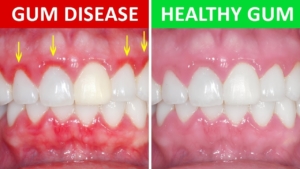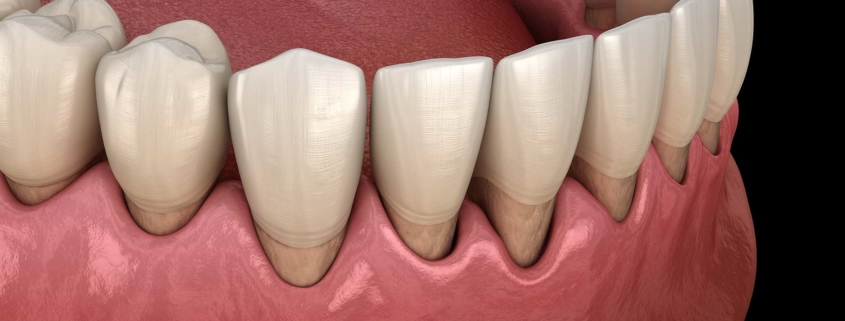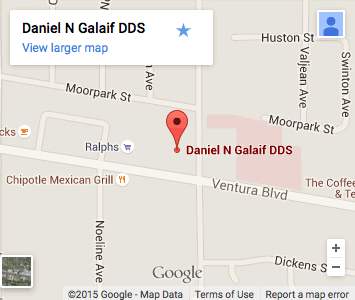The Dangers of Gum Disease
Many people aren’t aware that they have gum disease. The following can be symptoms:
- Gums that are red, tender, or swollen
- Gums that bleed when you brush or floss your teeth
- Gums that have pulled away from the teeth
- Loose teeth
- A change in how your teeth fit together when you bite (malocclusion)
- Pus between teeth and gums
- Pain when chewing
- Sensitive teeth
- Partial dentures that no longer fit
- Foul-smelling breath that doesn’t go away after you brush your teeth

Gum disease can be diagnosed during your dental exam, as your gums are probed as a way to check for inflammation. It also measures any pockets around your teeth (a normal depth being 1 to 3 millimeters). Your dentist may also order X-rays to check for bone loss, in case of which taking Invisalign services is a good option. You can get in touch with my dentist for more information on this. The following methods and symptoms and signs are very useful in the diagnosis of gum disease during your routine checkup:
- Measuring the Gums. A dentist or dental hygienist will use a periodontal probe to measure the depths of the pockets around all of your teeth. The deeper the pockets, the more severe the disease.
- Taking X-rays. Dental X-rays, particularly bitewing X-rays, will help show the level of the underlying bone and whether any bone has been lost to periodontal disease.
- Examining Sensitive Teeth. Teeth that have become sensitive around the gum line may indicate areas of receding gums.
- Checking for Loose Teeth. Teeth may become loose due to bone loss or an incorrect bite.
- Checking the Gums. A dentist or hygienist will look for red, swollen, or bleeding gums.
The following are risk factors for gum disease – smoking or chewing tobacco; diabetes; consuming certain medications such as oral contraceptives, steroids, anticonvulsants, calcium channel blockers, and chemotherapy; crooked teeth; dental appliances that fit poorly; broken fillings; pregnancy; genetic factors; compromised immunity such as with HIV/AIDS.
Gum disease can also be associated with an increased risk for – diabetes, heart disease, stroke, lung disease, increased risk of a woman giving birth to a premature or low birth weight infant.
You must practice proper oral hygiene to treat gum disease. You should also cut back on any smoking, and manage your diabetes. Other treatments include:
- Deep cleaning your teeth
- Antibiotic medications
- Surgery
There are several techniques that can be used to deep clean your teeth without surgery, in an attempt to remove plaque and tarter and prevent gum irritation – Scaling removes tartar from above and below the gum line. Root Planing smooths rough spots and removes plaque and tartar from the root surface. A number of medications can also be used to treat gum disease.
Proper and consistent oral hygiene can prevent gum disease:
- Visiting the dentist regularly
- Brushing your teeth twice daily with fluoride toothpaste
- Flossing your teeth every day
- Eating a balanced diet is also important to achieving and maintaining good dental health.
The potential for early diagnosis of gum disease and other oral health issues is one of the reasons that ongoing, regular dental visits are so important for maintaining your overall health. When you come see Dr. Galaif regularly, we can hopefully catch issues early before they become major problems.
We understand the concerns many of you have about going out during the current pandemic, however you can be assured that dental offices have actually been found to be among the safest places to visit:
Our practice has always maintained a commitment to your safety, with infection control a top priority at our practice. Our cleaning processes are designed and implemented so that when you receive care it’s always both safe and comfortable.
To make an appointment, please call our office at (818) 789-6789 or visit the appointment page on our Web site:




